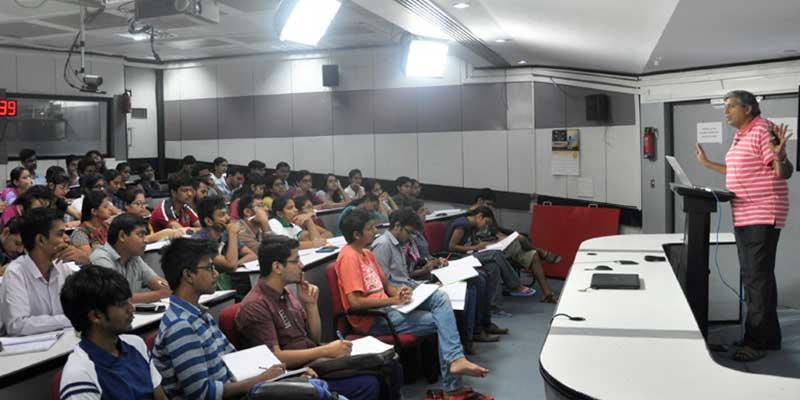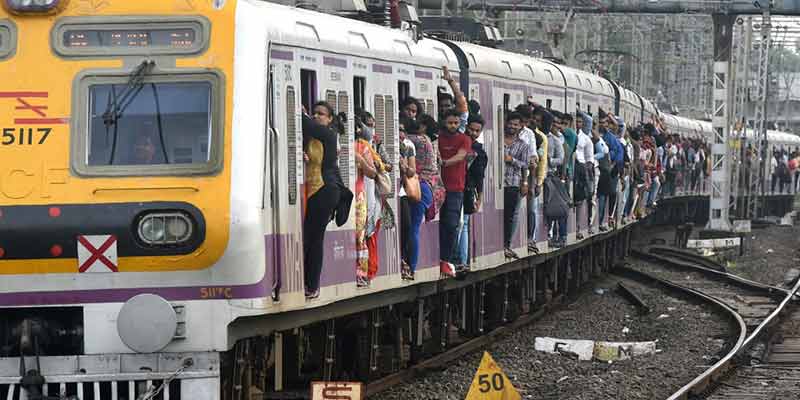- India
- Jul 06
Short Takes / Setting up of NRF
Govt to set up National Research Foundation
Setting up of National Research Foundation (NRF), adoption of a New Education Policy and allocation of over Rs 400 crore for building world-class institutes are among the budgetary announcements made for the education sector on July 5.
An outlay of Rs 94,853.64 crore has been earmarked for the education sector in 2019-20 fiscal, an increase of over 13 per cent from the revised estimates of 2018-19. In the last Budget, the then Finance Minister Arun Jaitley had allocated Rs 85,010 crore for the education sector which was later revised to Rs 83,625.86 crore.
Nirmala Sitharaman also announced ‘Study in India’ programme aimed at attracting foreign students to the country. She said the government will bring in a new national education policy to transform India’s higher education system into one of the best in the world.
Government would work out a very progressive and research oriented structure for NRF. The funds available with all ministries will be integrated in NRF. This would be adequately supplemented with additional funds.
NEP proposed setting up of NRF
The draft new education policy (NEP) prepared by a team of nine headed by space scientist K. Kasturirangan and made public on 31 May has said, “We have addressed this critical lacuna in this Policy by introducing, for the very first time a new National Research Foundation (NRF) that will focus on funding research within the education system, primarily at colleges and universities.”
NRF will encompass the four broad areas of Sciences, Technology, Social Sciences, and Arts & Humanities. Besides strengthening the presently weak support that subjects such as the Social Sciences and the Humanities receive, NRF will also bring in cohesion among the various research endeavours of multidisciplinary character.
Besides providing funding, NRF will also take care of the need to seed and build research capacity in universities and colleges through a formal mechanism of mentoring that will be instituted.
Major functions of NRF
*A National Research Foundation (NRF) will be established to grant competitive funding for outstanding research proposals across all disciplines, as determined by peer review and success of proposals.
*Most importantly, it will aim to seed, grow and facilitate research at academic institutions where research is currently in a nascent stage, through systems of mentoring by active research scholars, who may have retired or be near retirement at top research institutions.
*The NRF will also act as a liaison among researchers, ministries of government, and industry, in order to ensure that the most relevant and societally useful research reaches the people as soon as possible.
*The NRF will recognise outstanding research accomplishments achieved through NRF funding and initiatives, across subjects and various categories, through prizes and seminars recognising the work of the researchers.
*All these initiatives, together with career management structures suitably incentivising research at HEIs, will help bring research cultures to institutions, including most state universities, where research has not previously been present in a strong way.
Other major fundings in education sector
Support to IITs, Rashtriya Uchhatar Shiksha Abhiyan (RUSA), Scheme for Transformational and Advanced Research in Sciences (STARS), Scheme for Promotion of Academic and Research Collaboration (SPARC), Impactful Policy Research in Social Science (IMPRESS), are among the schemes which have got considerable allocations in the Budget.
The other schemes which got substantial allocation include implementation of the IMPRINT Research Initiative (Impacting Research Innovation and Technology) and National Mission in Education through information and communication technology.
Sitharaman said massive online open courses through SWAYAM initiative have helped bridge the digital divide for disadvantaged section of the student community. The government initiative aims at taking the best teaching and learning resources to all, including the most disadvantaged by bridging the digital divide.
To upgrade the quality of teaching, the Global Initiative of Academic Networks (GIAN) programme in higher education was started, aimed at tapping the global pool of scientists and researchers, the finance minister said.
The IMPRINT or IMPacting Research INnovation and Technology scheme began as a pan-IIT and Indian Institute of Science joint initiative to develop a roadmap for research to solve major engineering and technology challenges in selected domains needed by the country, she said.
Rail Budget bats for PPP model
Railways received a budgetary allocation of Rs 65,837 crore and highest ever outlay for capital expenditure amounting to Rs 1.60 lakh crore in the Budget for the year 2019-20 presented on July 5, which includes a whopping 200 per cent increase in funds for passenger amenities.
Last year, the outlay for the railways was Rs 1.48 lakh crore while the Budget allocation was Rs 55,088 crore. In the Interim Budget, the allocation was Rs 1.58 lakh crore.
The allocation for rail passenger comfort this fiscal has gone up to Rs 3,422.57 crore from Rs 1,657 crore in the Budget presented last year by the then Finance Minister Arun Jaitley.
Finance Minister Nirmala Sitharaman, while presenting the Budget, said the railway infrastructure would need an investment of Rs 50 lakh crores between 2018 and 2030 and proposed that a public private partnership (PPP) be used to unleash faster development and delivery of passenger freight services for railway projects to boost connectivity.
“Given that the capital expenditure outlays of Railways are around 1.5 to 1.6 lakh crores per annum, completing even all sanctioned projects would take decades. It is therefore proposed to use Public-Private Partnership to unleash faster development and completion of tracks, rolling stock manufacturing and delivery of passenger freight services,” she said.
Railway Minister Piyush Goyal said the Rs 50 lakh crore investment in railways that the finance minister talked about was needed to modernise stations and build passenger amenities like toilets, waiting rooms and better stations.
“We have drawn up the whole programme. Some of the old projects like 100 per cent electrification, advanced signalling, station development was already there. Now, we have to work out how to create additional capacities. All this will entail more doubling, tripling, new dedicated freight corridors, some semi high speed freight corridors, very large gamut of investments in different sectors, regional connectivity, connectivity to aspirational districts. We have worked this out both through government expenditure and through public-private partnership,” he said.
Public Private Partnership (PPP)
PPPs are aimed at increasing the efficiency of infrastructure projects by means of a long term collaboration between the public sector and private business, over the lifecycle of the project.
PPPs in railways can bring opportunities for investment, operating efficiency and modern technology. PPP railway projects providing for shared use of rail tracks may lead to efficiency gains and an increased revenue basis for states and private investors and make investments in PPP schemes more attractive.
Advantages:
*PPP brings additional resources through private funding.
*Minimum risk allocation for the government agencies.
*Access to international funding through private sector.
*Increasing efficiency in the execution of projects.
*Technological innovations and automation.
PPP Cell works as an expert advisory and internal consultancy group within the Railway Board for all matters involving Public Private Partnership. It identifies potential activities/projects to be taken up through PPP and assist and advise Nodal Directorates and Zonal Railways in developing and executing projects.


